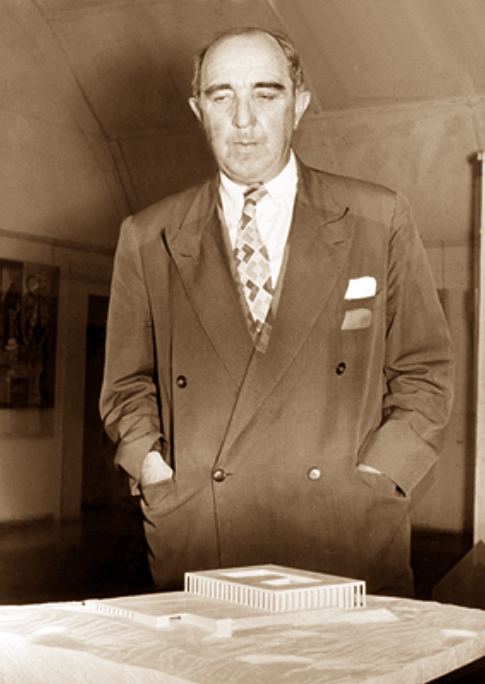Native name יוסף קלארווין Name Ossip Klarwein Full Name Ossip Klarwein | Nationality German-Israeli Children Mati Klarwein Occupation Architect Grandchildren Eleonore Klarwein | |
 | ||
Structures Kirche am Hohenzollernplatz | ||
Ossip (Yosef) Klarwein (6 February 1893 — 9 September 1970) was a Polish-born German-Israeli architect who designed many works in Germany and Israel. Between 1921 and 1933 he was employed with Johann Friedrich Höger, and became chief design architect. Klarwein was an important representative of Northern German Brick Expressionism and of modern architecture in Israel.
Contents
Germany
Klarwein was born in Warsaw, Poland. His father Menachem Klarwein was a Hebrew teacher and a Zionist. As Jews, the family immigrated to Germany because of the growing anti-Semitism in Poland and Russia after the failed revolution of 1905 in the Russian Empire. Klarwein studied architecture at the Technical University of Munich from 1917-1919, but he was not awarded a university degree. In 1920, he studied with Hans Poelzig in the master's studio for architecture of the Prussian Academy of Arts in Berlin. In 1921, Klarwein joined the architectural firm of Fritz Höger in Hamburg. Höger's office grew considerably in these years with increasing work orders, requiring additional personnel. Klarwein's designs were at the time published under Höger's name. Höger said that Klarwein was "one of the very best" employees. Between 1930 and 1933 Klarwein supervised the construction of the brick expressionist Church at Hohenzollernplatz following his designs in Berlin.
Palestine / Israel
In 1934, Klarwein emigrated with his non-Jewish wife Elsa (born Kühne), an opera singer, and his son Mati during the Fifth Aliyah to the British Mandate of Palestine, because they saw no future in Germany. Klarwein changed his first name from the Slavic name variant Ossip to the Hebrew form Yosseph. In Haifa, Klarwein became an independent architect.
Most of his works are public and commercial buildings, as well as development plans for cities and neighborhoods scattered throughout Israel. Klarwein's original design for the Knesset building unanimously won the 1957 architecture competition, and he continued to work on the project until completion, but some modifications were made to the plans. He designed with Richard Kauffmann and Heinz Rau, the campus of the Hebrew University.
